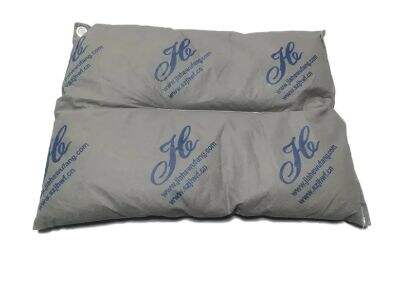Tá sé tábhachtach cabhrú leis na huirlisí cearta d’fhóir giotar agus leachtanna céimiceacha. Níl gá leat a ardú le páipéar sórtála áirithe ina bhfuil cuid acu. Déanta go háitiúil chun leachtanna a shórtáil, déanann siad an t-iarraidh níos éasca agus seachaintíonn siad leathnú na n-inneachar beaga. Ach leis an mbeagán rogha atá ann, cén fáth nach bhfuil páipéar sórtála is fearr duit?
Cá Héid Iarracht a Bheith Agat Nuair a Roghnaíonn Tú Páipéar Sórtála
Tá roinnt rudaí a b’fhéidir leat a thomhas nuair a roghnaíonn tú páipéar sórtála. An chéad rud: cad é an saghas leacht atá agat? Déanta go háitiúil chun giotar a shórtáil, páipéar sórtála giotar agus oibríonn páipéar sórtála céimiceach is fearr le haghaidh leachtanna maraofa. Bí cinnte amháin gur roghnaigh tú páipéar a d'éigin don leacht atá agat.
Tá meidhir eile tábhachtach ná méid an ghiotair. Má tá ghalra beag ag dul i dtaithí ort, beidh cúpla pád íseal do lorg tuil uillinn b'fhéadfaí go mbeadh leithscéal. Ach do ghearrthóirí móra, ní mhothaighear roinnt pionta eile chun é a ghlanadh i bhfad níos iomlánaithe.
Ag comparáid le Piontaí Absorbant a Shóisíonn Leachtanna
Dúirt an Dr. Heymann go raibh aon fhachtóir ar eolas nárbh ionann é agus cumas na bpiontaí absorbant éagsúla le haghaidh sóisíochta rudaí suas. Tá roinnt piontaí níos absorbanta ná na daoine eile. Roghnaigh piontaí is féidir leo líquid mór thar thréimhse gearr agus go héifeachtach a shóisíocht. De ghnáth, bíonn piontaí oil-absorbant in ann t-oil mhóir a shóisíocht, agus ceimiceálacha pá isteach tá siad deartha do cheimiceálacha tromchúiseacha. Léigh cé chomh maith le líquid is féidir le piontaí a choimeád.
Conas Piontaí Absorbantta beatha-friendliúla a Aimsiú
Chomh maith le tabhairt faoi deara cé chomh maith is a shóisíonn na piontaí líquid, tabhair faoi deara an córas ecofreagraíochta freisin. Aimsigh piontaí beatha-friendliúla Ionsaí Idirnáisiúnta déanta as mianta atá curtha ar ais, nó is féidir leo briseadh síos go nádúrtha. Ligeann sé seo lughaidh ar an láthair mallacht do ghlanadh duit.
Tá aitheantas agam ar an gceardchlú dá bhfuil na Piontaí Absorbant déanta as
Tá na torthaí aige ar leithéidí polapropilín nó ceallulóis, a thuannghann go maith. Sna cásanna eile, b’fhéidir go mbeadh siad clúdaithe le haghaidh thuannghachta níos fearr. Roghnaigh na toirthe a oireann do na leachtanna atá i gceist .
Roghnaíocht Mhéid agus Méid Cheart na dTorthaí Dianmhuinlíne
Nuair a bheidh tú cinnte faoi sheoithíníocht, cineál na leachtanna agus na hairgí, is é an chéim dheireanach ná roghnaíocht an mhéid cheart agus líon na dtorthaí thuannghacha. Déanfaidh sé seo cinnte go mbeidh padraí gá le fuidhrimh agat, gan a bheith ró-fhaite, mar sin bí cúramach
Clár na nÁbhar
- Cá Héid Iarracht a Bheith Agat Nuair a Roghnaíonn Tú Páipéar Sórtála
- Ag comparáid le Piontaí Absorbant a Shóisíonn Leachtanna
- Conas Piontaí Absorbantta beatha-friendliúla a Aimsiú
- Tá aitheantas agam ar an gceardchlú dá bhfuil na Piontaí Absorbant déanta as
- Roghnaíocht Mhéid agus Méid Cheart na dTorthaí Dianmhuinlíne

































